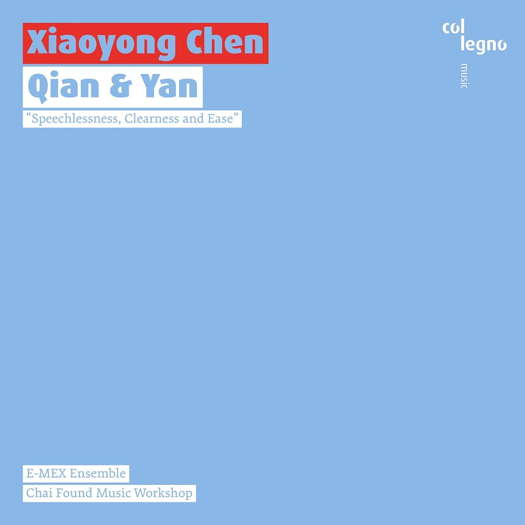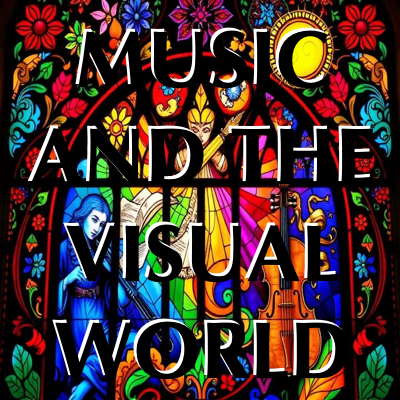- Cairo
- Seixas
- Undercroft Opera Company
- Richard Gill
- Britta Byström
- cor anglais
- Ignaz Brüll
- Graham Lustig

Chinese Contemporary Music
GIUSEPPE PENNISI listens to Xiaoyong Chen
'The mixture of colours is very interesting.'
In Chinese Qian & Yan means to be clear and to be serene, without, however, being explicit. This CD is a good introduction to contemporary Chinese music as created by a composer, born and raised in China, but trained in Hamburg under György Ligeti. Chinese contemporary music is scarcely known in Europe. Before the pandemic, a festival of electronic music (Emufest) brought to Rome every year a number of composers from the Far East, including China, even though most of them were from South Korea. There is the possibility that next summer, in Siena, the Chigiana International Festival & Summer Academy may have a focus on China's contemporary music; if it does, it would be a major event, worth following from all over Europe.
In the booklet of the CD, German musicologist Georg Beck asks: 'What is Chinese music? What does the future of Chinese music look like? Will the art of the future be based on tradition? If so, why?' Questions that might stem from a philosophical treatise, an essay, or a paper about the state of the arts. These questions seems to be more about the potential of art and what art can be; what art or artists dare to be – and less about the actual state of the arts. You can tell the difference in the insistent tone in which a topic – 'What is Chinese music?' – triggers a cascade of questions, hurled at the reader in a staccato call of inquiries, culminating in a single question mark after.
A more pragmatic and revealing manner is to approach single composers, as this CD does by offering a selection of compositions by Xiaoyong Chen. He is a Chinese composer who resides in Hamburg, where he is a professor for composition and intercultural mediation at the Hamburg University of Music and Theatre. Migration and globalization are more than just the backdrop to an immigration story. Unlike those migrants who are willing to melt into the culture of their host country – or who, at any rate, do not have a decision problem with this change of cultural clothing – Xiaoyong Chen holds on close to the cultural and arts cosmos that is China. One might even say that through his migration, this cosmos had morphed from eternal background to living foreground. After studying composition in Beijing from 1980 until 1985, Xiaoyong Chen spent four more years in a postgraduate course with György Ligeti in Hamburg. This leg of his journey, from East to West, corresponds to a journey back, from West to East – as of yet untaken. A choreographed balancing act between cultures that defines the milieu of the biography of Xiaoyong Chen, the residues of which we find throughout all his music, most prominently in the instrumentally diverse makeup of his compositions for ensemble.
In his music, Xiaoyong Chen likes to strike a constant balancing act between his origins in Beijing and Hamburg, which he has made his home, where he studied and where he has been teaching composition and intercultural mediation since 2013.
We are confronted with the blend of Chinese tradition and Western contemporary music in the first composition: Wasserzeichen (Filigrana) for sheng and ensemble composed in 2009 and reworked in 2015.
Listen — Xiaoyong Chen: Wasserzeichen
(track 1, 0:00-0:57) ℗ 2021 Col Legno :
At fifteen minutes, it is a comparatively long and elaborate piece for mixed ensemble with repeated metallic fortissimo beats of the Chinese pipa, a version of the lute.
In Yang Shen (2002), for soprano, three Chinese instruments and ensemble. the listener is confronted with a fusion of a very old poem (of the seventh century B.C.) and highly modern style of composing. The poem is sung, and at times, read by the soprano (Julia Henning); it is, at the same time, philosophical and erotic. The score played by the ensemble is full of fire.
Listen — Xiaoyong Chen: Yang Shen
(track 2, 0:55-1:29) ℗ 2021 Col Legno :
The third piece is DUI and HUA for mixed ensemble. It is a commission by the E-MEX Ensemble (conducted by Christoph Maria Wagner) - the ensemble of this CD. There are simultaneously two levels. In the upper level, the Chinese part is played by four traditional instruments (pipa, zheng, yangquin, ruan): the players are members of the Chai Found Music Workshop, animated by Xiaoyong Chen himself. In the lower level, flute, clarinet, strings, piano. It is a gentle piece, one of the most engrossing of this selection.
Speechlessness, Clearness and Ease is a commission by MarzMusic and the Berliner Festspiele. It is based on disparate source material, including synthetic sound. The performing musicians are explicitly told to listen to the synthetic sound, whilst playing, so that to achieve a right balance between their instruments and electronics. The message of the piece, dated 2004, is in its title.
Listen — Xiaoyong Chen: Speechlessness, Clearness and Ease
(track 4, 0:00-0:32) ℗ 2021 Col Legno :
The final piece Qian & Yan (2008-10) consists of short segments that contrast considerably, yet form a whole. The mixture of colours is very interesting.
Listen — Xiaoyong Chen: Qian & Yan
(track 5, 0:00-0:49) ℗ 2021 Col Legno :
We have to be grateful to the Col Legno label for publishing interesting rarities like this. They allow us to discover a hardly known universe.
Copyright © 30 October 2021
Giuseppe Pennisi,
Rome, Italy

CD INFORMATION - XIAOYONG CHEN: QIAN & YAN
MORE CLASSICAL MUSIC ARTICLES ABOUT CHINA




